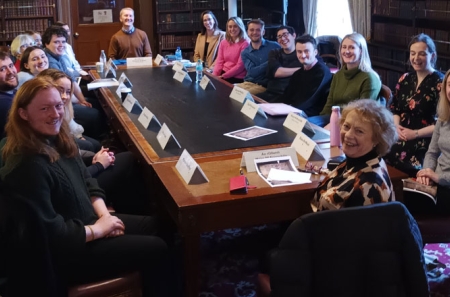
Discover the Library’s Special Collections
30 April 2021Latest Library Blog post. This month we invite you to explore the Library’s collections, take a look and see what you can find!
From the very beginnings of the Royal Irish Academy in 1785, the Library has been collecting material relating to Irish history, archaeology, language, culture and natural history. Our website is your first port of call for an introduction to our collections. Over the last year we have added extensive information to our Special Collections pages, so now there is even more to discover. Our Special Collection pages contain a detailed overview of our manuscripts and collections and in many cases extensive reading lists. The collections have been grouped into five sections: Medieval and early modern manuscripts; Modern manuscripts; Photographic collection; Print collections; Prints and drawings. We invite you to explore our website and learn about our wonderful holdings.
Medieval and early modern manuscripts
Discover Ireland’s earliest manuscripts. The Library holds the largest collection of Irish language manuscripts in the world, including Lebor na hUidre (the Book of the Dun Cow), the oldest extant manuscript completely in Irish. The website contains detailed pages for 26 of our oldest and most important manuscripts, which are wonderful sources for historical, genealogical, biblical and hagiographical material.
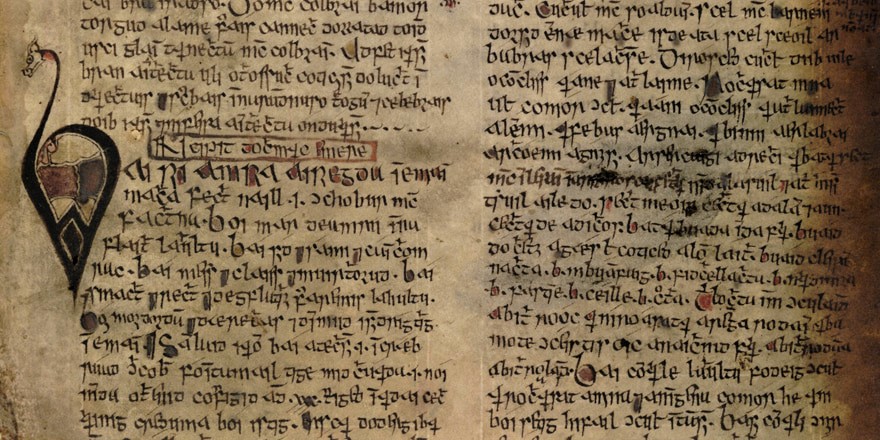
Lebor na hUidre / The Book of the Dun Cow. RIA MS 23 E 25, p.121.
The Book of Ballymote was one of the first manuscripts acquired by the Academy in 1785. View our online exhibition to learn about this important fourteenth-century Irish language manuscript.
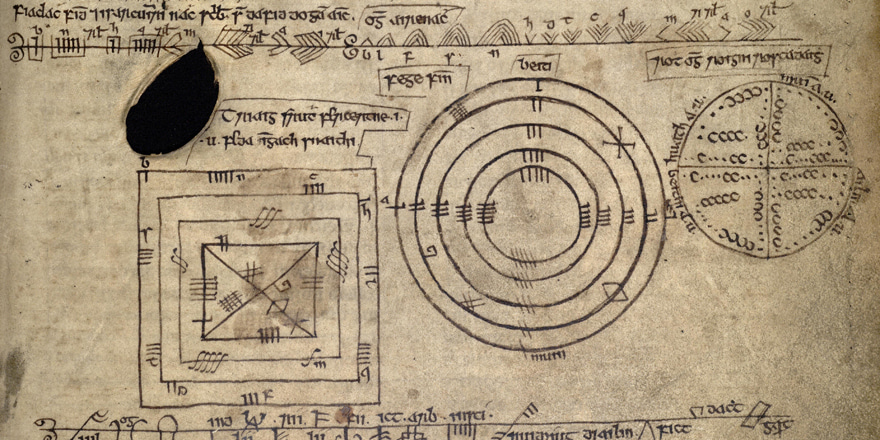
Book of Ballymote. RIA MS 23 P 12, f.170r. The Book of Oghams.
Also, be sure to view our new online exhibition on the Library’s oldest manuscript ‘The Cathach of Colum Cille: The story of an ancient Irirish manuscript.’
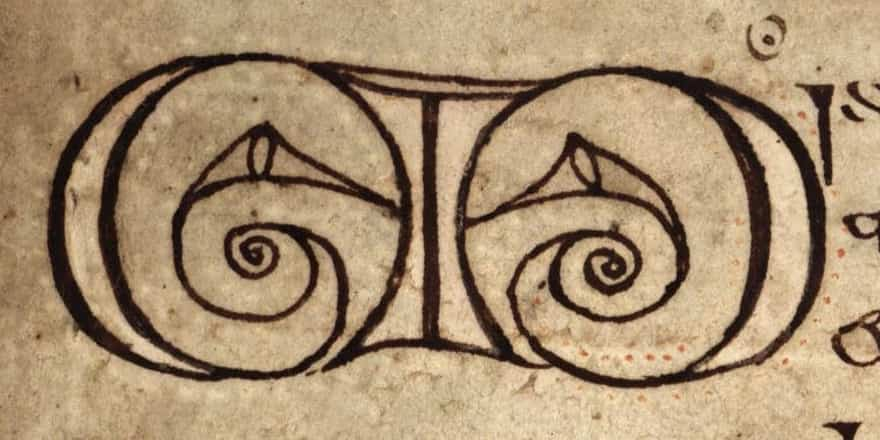
An Cathach. RIA MS 12 R 33, f.21r. (Detail: Capital M)
Modern Manuscripts
The Library’s Modern Manuscripts collections are a major research source for the Irish language, and the history, topography, antiquities and natural history of Ireland, as well as for genealogy and family history. The Ordnance Survey of Ireland archive is one of the largest and better known of our collections, comprising letters, memoirs and drawings made by the surveyors and antiquarians employed on the 19th-century survey and mapping of Ireland.
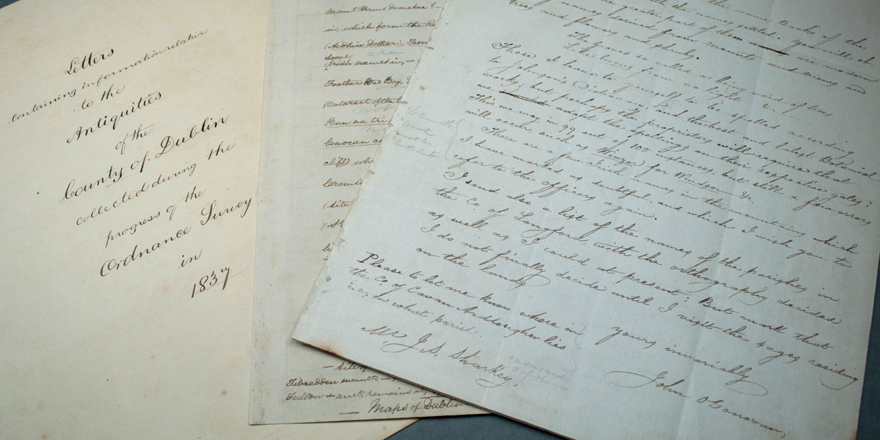
Ordnance Survey Letters.
Another well used collection is the Upton Collection, an important resource for genealogy and family history, particularly families connected with the Irish midlands. A detailed listing of all the material contained within the collection is available online. Take a look, there may be something of relevance to your own research!

Upton Papers.
If your interests lie a little further afield, get to know the Wilmot-Dashkova papers. For a bird’s eye view of life at court and on a Russian country estate, and for records of society in France, Italy and Russia in the early 19th century, this collection will provide you with a mine of information.
Photographs
The Library’s Photographs Collection includes images of Irish landscapes, places and objects of historical, archaeological and architectural interest, portraits of individuals connected with the Academy and Academy manuscripts. Among the most well known collections of photographs are those by Thomas J. Westropp taken in Dublin after the 1916 Rising. Details and thumbnails of these fascinating photographs can be found on the DRI website. Search our Photographs Catalogue for more photographs.

Bringing home the turf, Rosapenna, Co. Donegal (RW 2278). Praeger Collection.
Prints, Drawings and Artefacts
The Prints, Drawings and Artefacts Collection includes over 8,600 antiquarian sketches and drawings depicting Irish landscapes and antiquities. The collection includes works by Gabriel Beranger, George Petrie, G.V. du Noyer, W.F. Wakeman and John Windele. A large number of these drawings have been digitised and thumbnail images are available on our online catalogue. For an overview of our collection of antiquarian sketches and drawings, be sure to view our online exhibition ‘Cairns, cromlech and castles.’
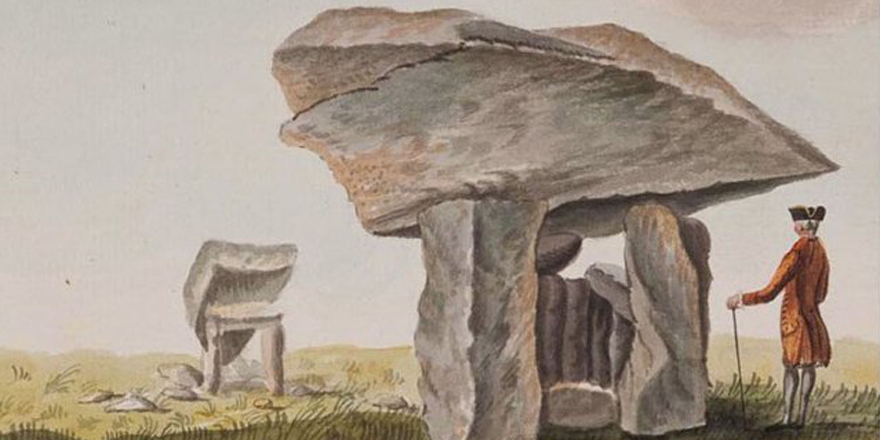
Cromlech on the lands of Kilcluny [Kilclooney], Co. Donegal by Revd Joseph Turner (1799). RIA MS 3 C 33/29.
The Library’s Print Collection consists of books, pamphlets and journals mainly, but not exclusively, relating to Irish history, language, archaeology and history of science. The older print collection includes the private libraries of Thomas Moore, Osborn Bergin, Charles Haliday, A.H. Haliday, Cynthia Longfield, Henry A.S. Upton and others. New books of Irish interest are regularly added to the collection by purchase and donation. The Library’s Early Irish imprints collection comprises material relating to the cultural, economic, linguistic, social and political aspects of Irish history. For printed material search our online catalogue.
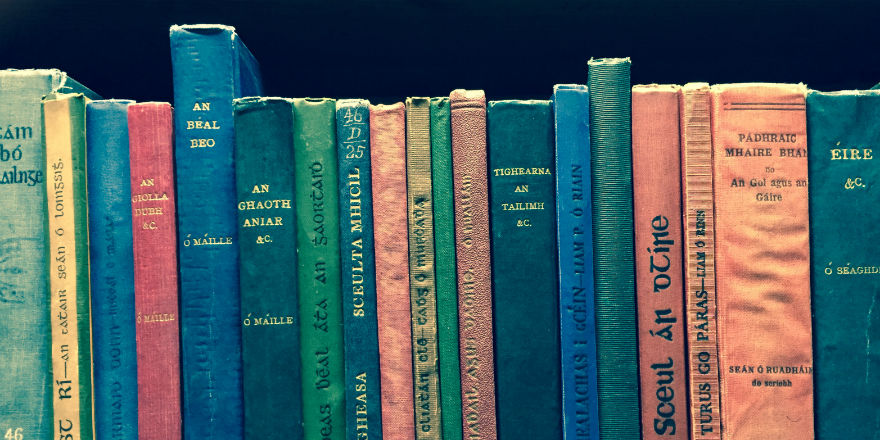
For additional details on each individual item held by the library see our five online catalogues of printed works (including maps), periodicals, photographs, prints & drawings, and manuscripts.
Main image: Deed from the Guild of St Anne, from the Haliday Collection. For more information on the manuscripts of the Haliday Collection view our online exhibition 'Dublin Documents'.
You may also like to view our ‘Treasures of the Royal Irish Academy Library’ exhibition.
Sophie Evans
Assistant Librarian

